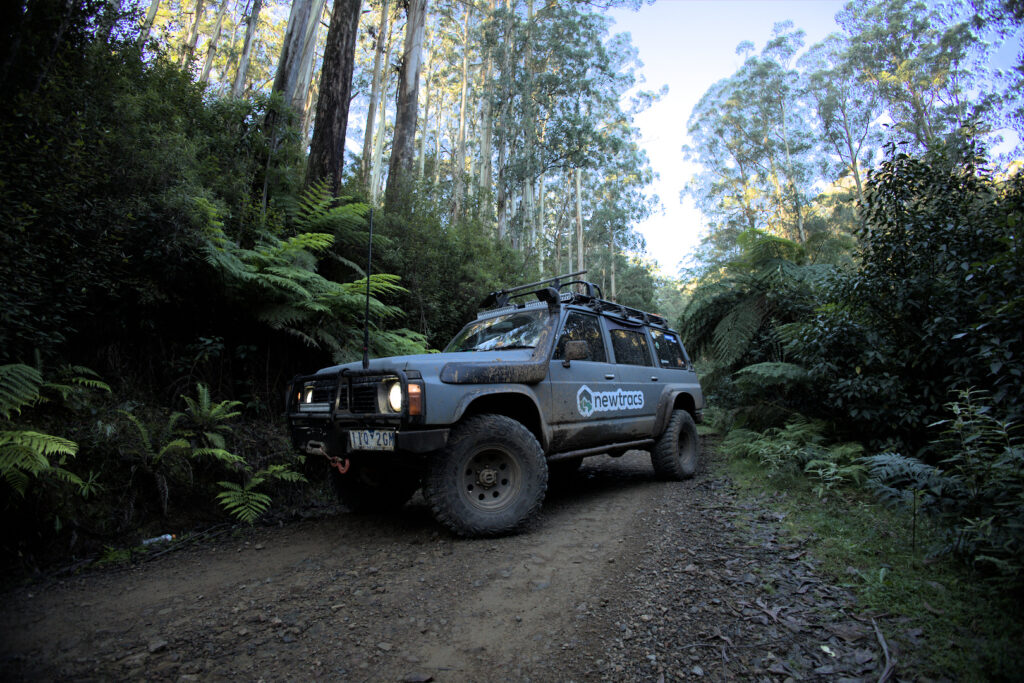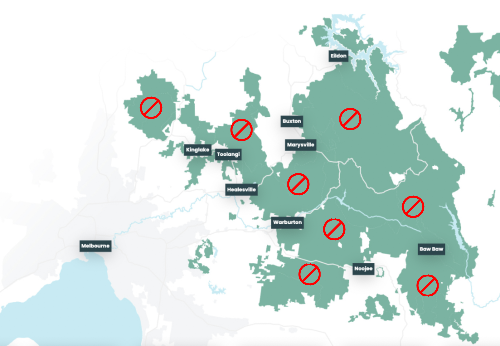Proposed Victorian National Park Threatens 4WD Tourism Revenue and Iconic 4WD Areas
The proposed Great Forest National Park project aims to expand protected areas in Victoria’s Central Highlands. The park aims to safeguard endangered species and critical ecosystems after timber logging in the area was discontinued.
Conservationists support the initiative for its promised environmental benefits. However, concerns have been raised about the impact of the accompanying access restrictions.

Popular activities like camping, 4WDing, bushwalking, horse riding, and hunting will be significantly restricted under the proposed plan.
The project website claims many activities will still be allowed but admits on their FAQ page:
“It is likely that there will be designated tracks specifically for 4×4 driving and some sensitive areas where vehicles will not be permitted” – Great Forest National Park FAQ.
State forest vs national park – whats the difference?
In Victoria, state forests and national parks are governed by different laws and serve distinct purposes. State forests, managed under the Forests Act 1958, are designated for multiple uses including timber production, recreation, and conservation. They offer more flexible access for activities like 4WD driving, dispersed camping, horse riding, and hunting.
In contrast, state and national parks are managed under the National Parks Act 1975, focusing primarily on conservation and recreation with stricter regulations to protect natural and cultural values. This often results in more limited access and restricted activities compared to State forests.
How big is the impacted area?
The proposed extent of the Great Forest National park will cover 525,000 hectares, tripling the amount of existing area made up by National Parks. This would cover 2.3% of the state of Victoria.
You can use the slider below to visually understand the extent of the proposed park and the regions it encompasses.
Will visitor numbers reduce if forest areas become parks?
A measure for the extent to which existing visitor numbers will reduce can be readily seen with the help of usage data obtained by the Newtracs mapping platform. The platform boasts over 100,000 users, most based in Victoria, with many thousands using the app to explore our forests and parks every month. We can visualise this usage on our map.
The below screenshot of the Newtracs 4wd trail map highlights how surrounding forested areas (light green) are frequently visited, in stark contrast to the national & state Park areas (darker green) with minimal visitation and usage.
Usage of forested areas (light green) vs state & national park areas (darker green) by 4wders.
Assessing the economic impact of restricting access to existing forests
The Newtracs analytics team is currently undertaking an impact study to understand the potential economic loss as a result of restricting access to existing forests. Whilst multiple economic studies have been conducted, few seem to substantially acknowledge the lost economic stimulus of a reduction in existing visitors.
Many regional businesses rely on tourism expenditure provided by 4wders, campers, hunters and other forest users. 4wders especially tend to spend a high amount on trips – for petrol, food & camping supplies, accomodation, meals, vehicle repairs, and more.

threatened by a proposed National Park covering this area.
Previous analysis on the economic impact of the proposed park highlights an historic lack of data on how existing forest areas are currently used. This in turn makes it difficult to calculate any economic impact of imposing access restrictions on these areas. While previous national park establishments are used as proxies due to a lack of specific data, the study acknowledges that the Central Highlands’ proximity to Melbourne endows it with unique regional characteristics.
Thanks to the usage data contributed by the thousands of local 4wders using the Newtracs mapping platform, for the first time, we have access to data insights that can shed light on the economic contribution the hobby provides local communities. As we continue to conduct our impact study, this article will be updated with the results of our findings.
Our methodology is simple. Key metrics include:
- Average Spend per Trip (AST): This includes fuel, food supplies, meals, camping supplies & sundries allowance.
- Number of Trips per Year (NTY): Calculated from Newtracs trip data.
- Market Multiplier (M): Multiplier to account for the fact not all 4wders use Newtracs, and not all Newtracs users always record a trip on their journey.
- Total annual economic benefit = AST x NTY x M
Analysis commissioned by the Great Forest National Park project estimate the new park would have a negligible effect on existing visitation and therefore consumer spend, and could stimulate up to $71.1 million dollars annually, creating 760 jobs.
In addition, the above calculation does not take into account the amount spent on maintaining and preparing a vehicle to go off-roading in Victoria’s famously technical terrain, which can be significant. Common spend categories include servicing & maintenance, lift kits, wheels & tyres, winches & recovery gear, snorkels, communications & radios – to name a few.
Don’t want our forests to be closed? Sign the petition.
While the public consultation period has expired, you can still make your voice heard to protect our 4wd trails and preserve Victorian off-roading culture by signing a petition. The petition is sponsored by Wayne Farnham, MP for the Victorian electorate of Narracan. Follow the below link to sign the petition online (it takes 20 seconds to sign).
You can also join a rally being held to launch the petition at the Drouin Rec Reserve @ 11am on Sunday 26 May.









